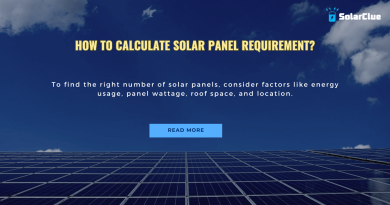Are solar panels strong enough to walk on
Solar panels are a significant investment, and their structural integrity is crucial for ensuring long-term performance and safety. Understanding the materials used in solar panel construction, their load-bearing capacity, and the factors affecting their strength can help you make informed decisions about installation, maintenance, and safety. This guide will delve into these aspects and provide practical guidelines for ensuring the durability and structural integrity of your solar panels.
Table of Contents
- 1 The Construction of Solar Panels and Their Materials
- 2 The Load-Bearing Capacity of Solar Panels
- 3 Safety Considerations for Walking on Solar Panels
- 4 Factors Affecting Solar Panel Strength
- 5 The Impact of Weight on Solar Panel Performance
- 6 Proper Installation and Maintenance for Structural Integrity
- 7 The Role of Warranties and Insurance in Case of Damage
- 8 The Future of Solar Panel Technology and Its Durability
- 9 Common Misconceptions About Solar Panel Strength
- 10 Case Studies of Solar Panels Withstanding Various Loads
- 11 Table: Key Factors Affecting Solar Panel Structural Integrity
- 12 FAQ Section
The Construction of Solar Panels and Their Materials
Tempered Glass:
- Role: The front surface of most solar panels is made from tempered glass, which protects the photovoltaic cells from environmental damage while allowing sunlight to pass through.
- Strength: Tempered glass is four to five times stronger than standard glass, making it highly resistant to breakage and capable of withstanding significant impact.
Frames:
- Material: Solar panel frames are typically made from anodized aluminum, known for its lightweight, corrosion-resistant properties. The frame provides structural support and helps secure the solar cells and glass in place.
- Function: The frame plays a crucial role in maintaining the panel’s shape, providing attachment points for mounting systems, and contributing to the overall strength of the panel.
Photovoltaic Cells:
- Material: The core of the solar panel consists of silicon-based photovoltaic (PV) cells, which are brittle and must be protected by the glass and frame.
- Fragility: While PV cells are fragile on their own, the tempered glass and encapsulation materials protect them from mechanical stress.
Encapsulation:
- Material: Ethylene-vinyl acetate (EVA) is commonly used to encapsulate the PV cells, providing insulation and protection from moisture and mechanical damage.
- Function: Encapsulation materials help preserve the integrity of the cells and enhance the overall durability of the panel.
The Load-Bearing Capacity of Solar Panels
Load Ratings:
- Standard Load Capacity: Most solar panels are rated to withstand snow loads of up to 5400 Pascals (Pa) and wind loads of up to 2400 Pa, which translates to about 112 pounds per square foot (psf) for snow and 50 psf for wind.
- Static vs. Dynamic Loads: Solar panels can handle static loads, like snow accumulation, more effectively than dynamic loads, such as walking or sudden impacts.
Factors Affecting Load Capacity:
- Panel Size and Design: Larger panels or those with thinner frames may have lower load-bearing capacity.
- Mounting System: The mounting system’s design and installation quality also play a significant role in determining the overall load-bearing capacity of the solar array.
Safety Considerations for Walking on Solar Panels
Potential Risks:
- Glass Breakage: Walking on solar panels can exert significant pressure on the tempered glass, potentially leading to cracks or shattering.
- Damage to PV Cells: Even if the glass doesn’t break, the pressure can cause micro-cracks in the PV cells, reducing the panel’s efficiency and lifespan.
Guidelines for Walking on Solar Panels:
- Avoid Walking: It is generally advised not to walk on solar panels to prevent damage. If walking on the roof is necessary, use walkways or step only on the panel frames.
- Safety Gear: If walking on panels is unavoidable, wear soft-soled shoes to minimize the pressure and avoid carrying heavy objects.
Factors Affecting Solar Panel Strength
Installation Quality:
- Proper Mounting: A well-installed mounting system distributes the load evenly across the panels, reducing the risk of structural damage.
- Fastening: Secure fastening of the panels to the mounting system is crucial to prevent movement or bending under load.
Environmental Factors:
- Temperature Fluctuations: Extreme temperature changes can cause the materials in the panels to expand and contract, potentially weakening the structural integrity over time.
- Moisture and Humidity: Prolonged exposure to moisture can lead to corrosion of the frame and deterioration of the encapsulation materials.
The Impact of Weight on Solar Panel Performance
Weight-Induced Stress:
- Performance Degradation: Excessive weight on the panels can lead to micro-cracks in the PV cells, which reduce the efficiency and overall power output of the system.
- Physical Damage: Significant weight, such as heavy debris or human activity, can cause the glass to crack or the frame to bend, leading to potential system failure.
Preventive Measures:
- Regular Inspection: Periodic checks for signs of stress, such as cracks or warping, can help detect and address issues before they lead to major damage.
- Load Management: In areas with heavy snowfall, installing a snow guard or regularly clearing snow from the panels can prevent excessive load buildup.
Proper Installation and Maintenance for Structural Integrity
Installation Best Practices:
- Professional Installation: Ensure that your solar panels are installed by certified professionals who follow industry best practices.
- Correct Tilt Angle: The tilt angle should be optimized not only for solar exposure but also for effective load distribution.
Ongoing Maintenance:
- Cleaning: Regular cleaning removes debris that can add weight and stress to the panels.
- Monitoring: Use monitoring systems to detect any performance drops that may indicate structural issues.
The Role of Warranties and Insurance in Case of Damage
Warranties:
- Coverage: Most solar panels come with a manufacturer’s warranty that covers defects in materials and workmanship for 10 to 25 years. This typically includes coverage for structural damage.
- Claim Process: In case of damage, follow the manufacturer’s guidelines for filing a warranty claim, which may include providing proof of proper installation and maintenance.
Insurance:
- Home Insurance: Solar panels are often covered under standard home insurance policies. It’s important to verify that your policy covers the panels and to understand any limitations or exclusions.
- Specialized Solar Insurance: Consider additional insurance coverage specifically for solar panels, which may offer more comprehensive protection against a range of potential issues.
The Future of Solar Panel Technology and Its Durability
Advancements in Materials:
- Stronger Glass: Research is ongoing into developing even stronger glass that can withstand greater impacts and weights without compromising light transmission.
- Flexible Panels: Innovations in flexible solar panels made from materials like thin-film can offer greater resilience against physical stress.
Improved Frame Designs:
- Composite Frames: Future frames may use composite materials that offer higher strength-to-weight ratios, enhancing durability without adding significant weight.
Common Misconceptions About Solar Panel Strength
Myth 1: Solar Panels Are Fragile:
- Reality: Solar panels are designed to be durable and withstand various environmental conditions, including hail, snow, and wind. However, they should still be treated with care to prevent unnecessary damage.
Myth 2: You Can Walk on Solar Panels Without Risk:
- Reality: Walking on solar panels is risky and can lead to structural damage and reduced efficiency. It is best to avoid walking on them whenever possible.
Case Studies of Solar Panels Withstanding Various Loads
Case Study 1: Solar Panels Surviving Hailstorms:
- Location: Colorado, USA
- Scenario: A solar installation survived a severe hailstorm with only minor cosmetic damage to a few panels, thanks to the use of high-quality tempered glass.
- Key Takeaway: The durability of tempered glass in solar panels is essential for withstanding extreme weather conditions.
Case Study 2: Heavy Snow Load on Solar Panels in Norway:
- Location: Oslo, Norway
- Scenario: Solar panels installed on a residential roof withstood several feet of snow without any structural damage, due to proper installation and snow guard systems.
- Key Takeaway: Correct installation and proactive snow management are crucial in regions with heavy snowfall.
Table: Key Factors Affecting Solar Panel Structural Integrity
| Factor | Impact on Structural Integrity |
|---|---|
| Material Quality | High-quality materials like tempered glass and aluminum frames provide superior strength and durability. |
| Installation Quality | Professional installation ensures even load distribution and reduces the risk of damage. |
| Environmental Conditions | Extreme temperatures, moisture, and snow can impact the structural integrity over time. |
| Load Capacity | Solar panels are designed to withstand specific static and dynamic loads, but excessive weight can cause damage. |
| Maintenance | Regular cleaning and inspections help maintain structural integrity and prevent damage. |
FAQ Section
1. Can you walk on solar panels?
Walking on solar panels is not recommended as it can cause damage to the glass and PV cells, leading to reduced efficiency and potential structural issues.
2. What materials are used in solar panel construction?
Solar panels are typically made with tempered glass, anodized aluminum frames, silicon-based photovoltaic cells, and encapsulation materials like EVA.
3. How much weight can solar panels withstand?
Most solar panels are rated to handle snow loads of up to 5400 Pa and wind loads of up to 2400 Pa, equivalent to about 112 psf for snow and 50 psf for wind.
4. What should I do if my solar panel is damaged?
Contact your solar installer or manufacturer to assess the damage. If under warranty, file a claim for repair or replacement. Check with your insurance provider to see if the damage is covered.
5. How can I maintain the structural integrity of my solar panels?
Ensure proper installation, regularly clean the panels, inspect for any signs of damage, and avoid placing excessive weight on the panels.


